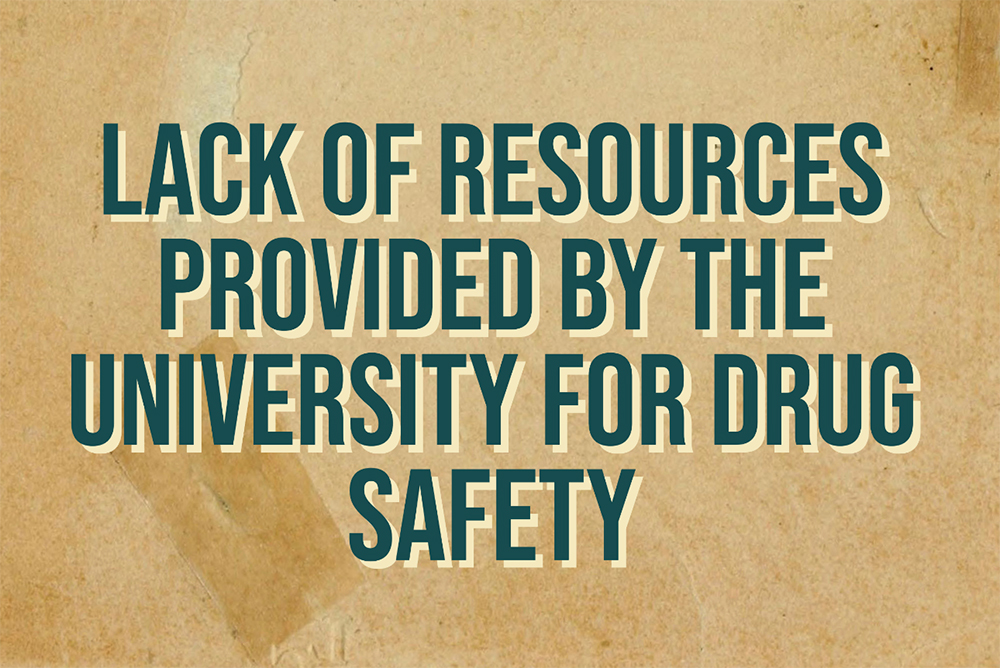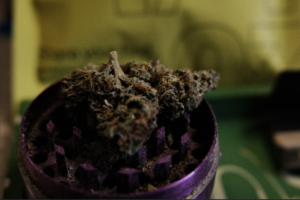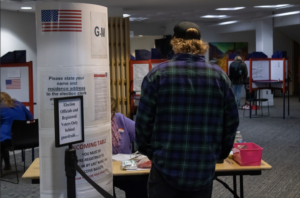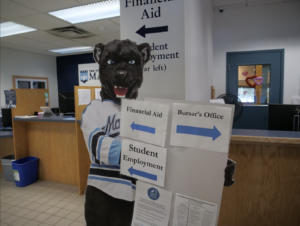On Oct. 21, 2022, the University of Maine sent out an email to all undergraduate students about the fentanyl crisis and warned that this drug is being disguised as candy this Halloween. This email was sent out, in part, as a response to the Drug Enforcement Administration’s warnings about fentanyl which includes a lot of information about the drug. Despite this, UMaine includes only the most basic of information, some of which isn’t even entirely accurate. This makes it more challenging to believe that UMaine is actually concerned about this problem when they can’t even get their facts correct in an email.
“Fentanyl is a synthetic opioid that is 50 times more potent than heroin and 100 times more potent than morphine. Just two milligrams of fentanyl, which is equal to 10-15 grains of table salt, is considered a lethal dose,” the DEA said.
This high potency is why fentanyl is often mixed into other drugs, sometimes even made to look like prescription medication. The email mentions this danger.
“[F]entanyl is being disguised as candy and mixed with other drugs like heroin, cocaine,” the email said.
Despite the email’s insinuation that the fentanyl crisis is a recent concern, fentanyl isn’t a new addition to the opioid crisis nor is the practice of mixing it into other substances. The fear of fentanyl being put into Halloween candy this Halloween is more recent and has its origins in an Oct. 19, 2022 instance where the LA Police confiscated drugs, likely fentanyl, at the LAX Airport, which was being smuggled through security in candy wrappers and containers.
This type of smuggling, however, doesn’t seem to be common and is likely a singular instance that has gotten exacerbated in the media. Especially since the last line in the report seems to have caused misinterpretation and concern without people knowing whether that concern is merited.
“With Halloween approaching, parents need to make sure they are checking their kids’ candy and not allowing them to eat anything until it has been inspected by them,” the report said.
The concern stems from primarily parents who are worrying about their kids and whether they’re going to have fentanyl in their Halloween candy. There are some sources that say this is a legitimate concern while others say it’s a misinterpretation and parents shouldn’t worry about their kids’ safety in regards to fentanyl in their candy.
In an Aug. 30, 2022 article by the DEA, they say there’s a certain type of fentanyl, rainbow fentanyl, that is being used to target a young audience since it looks like candy, especially to kids.
“Rainbow fentanyl — fentanyl pills and powder that come in a variety of bright colors, shapes, and sizes — is a deliberate effort by drug traffickers to drive addiction amongst kids and young adults,” said DEA Administrator Anne Milgram.
It appears this may be the view UMaine is taking based on the content of the email.
“In our ongoing effort to keep UMaine safe and our community informed we are writing since increasingly we are all reading reports in the national and local news about Fentanyl flooding the market disguised as candy,” the email said.
This is most likely because this is the view the DEA is pushing and UMaine is more likely to see a corporation as more trustworthy than singular doctors.
Not everyone agrees though.
Dr. Ryan Marino, who is a medical toxicologist and addiction medicine doctor at Case Western Reserve University School of Medicine in Cleveland believes that the rainbow fentanyl isn’t meant to look like candy, but legitimate drugs.
“Multicolored pills are a thing in (legitimate) pharmaceuticals, and these probably emerged to mimic what are actual pills and how those look… They don’t look like candy at all. … Colored drugs have been a thing for years, if not decades,” Marino said.
“Multiple experts in the field of substance use and harm reduction told TODAY they were skeptical of the DEA’s claims, noting that colorful, illicit pulls have existed for years and include substances like ecstasy, not just fentanyl. The experts said there’s no data to suggest drug dealers are targeting children,” the article said.
While the article doesn’t cite these specific experts, Marino agrees with this statement. Marino also spoke about the incident at the LAX Airport in relation to kids getting fentanyl laced candy this Halloween.
“These drugs…were hidden inside of something to try to avoid detection…The use of candy packaging does not signify that these are being passed off as candy, and certainly does not imply that the drugs someone is going to lengths to smuggle would then be given away for free rather than sold for profit,” Marino said.
In that same Today article, Capt. Brandon Dean of the LA Police Department says that just because the fentanyl was in candy packaging doesn’t mean it’s supposed to be given out to kids on Halloween. He said explicitly that he doesn’t think anyone is putting anything in candy.
A piece of this reasoning is that drug dealers and cartels don’t want to kill their buyers. They want them addicted so they can keep providing them with the drugs and keep getting money from them. However, for Marino and Dean, it seems irrational to target children in any capacity. Firstly, they wouldn’t want to give away this drug that they could sell for a very high price. Secondly, young people may not have the resources to continue buying from a supplier if they do get addicted, which means it wouldn’t even be a good business deal on the end of the dealers.
Despite this, there is a legitimate reason for concern regarding drugs, as the United States is currently in a huge opioid crisis that has been ongoing for more than two decades. In 2020, nearly 92,000 people in the United States died from overdosing. Over 107,000 died from overdosing in 2021.
The Drug Enforcement Administration even launched the One Pill Can Kill campaign in Sept. 2021 meant to educate on the dangers of fake pills.
“As part of the One Pill Can Kill initiative, the DEA and its law enforcement partners seized more than 10.2 million fentanyl pills and approximately 980 pounds of fentanyl powder during the period of May 23 through Sept. 8, 2022,” the campaign page said.
These fake pills are one of the biggest ways that people take fentanyl, whether intentionally or accidentally. However, this is not a problem that UMaine’s email to students addressed and seems like a pertinent fact that should have been included. Especially considering that a high percentage of overdose cases in the U.S. involve drugs like fentanyl.
“[F]entanyl is a public health problem. Two-thirds of the 108,000 drug overdose deaths in the U.S. in 2021 involved synthetic opioids like fentanyl, per the Center for Disease Control and Prevention,” the Today article said.
That article was published on Oct. 13, 2022, eight days before UMaine’s email about fentanyl was sent out. Despite this, the email fails to give the necessary context to understand the full complexity or accuracy of the fentanyl and opioid crisis.
For example, as already discussed, there is some debate on the accuracy of the fentanyl being disguised as candy. However the email doesn’t mention this debate or even where that claim comes from, whether it’s true or not.
The email begins directly addressing this problem, however the steps given to stay safe are not specific to fentanyl. If they were, they would have mentioned that fentanyl pills can often be disguised as prescription opioids and medication, which is not in debate. There is also a medication, naloxone, that can temporarily reverse the effects of an overdose and that gives a person more time to get to a hospital. The email lists an article for more information on fentanyl, but it has very little information. There are other DEA articles that have a lot more information that would be more helpful to students.
In addition to this, the email mentions that fentanyl is mixed into alcohol as well as heroin and cocaine. It has been proved that it has been combined with heroin and cocaine, but there doesn’t seem to be a source that fentanyl and alcohol are mixed and is in fact a dangerous combination. Is this perhaps a way to dissuade students from drinking for fear of fentanyl when that is not a legitimate concern and simply UMaine wanting to limit students drinking and getting drunk?
Overall, it seems that UMaine either did not care to find the information or doesn’t care enough about the safety of its students to give them the proper information and resources so they can actually stay safe.














